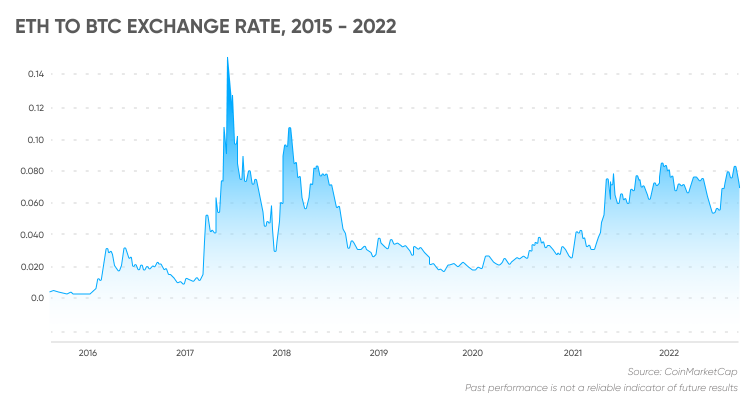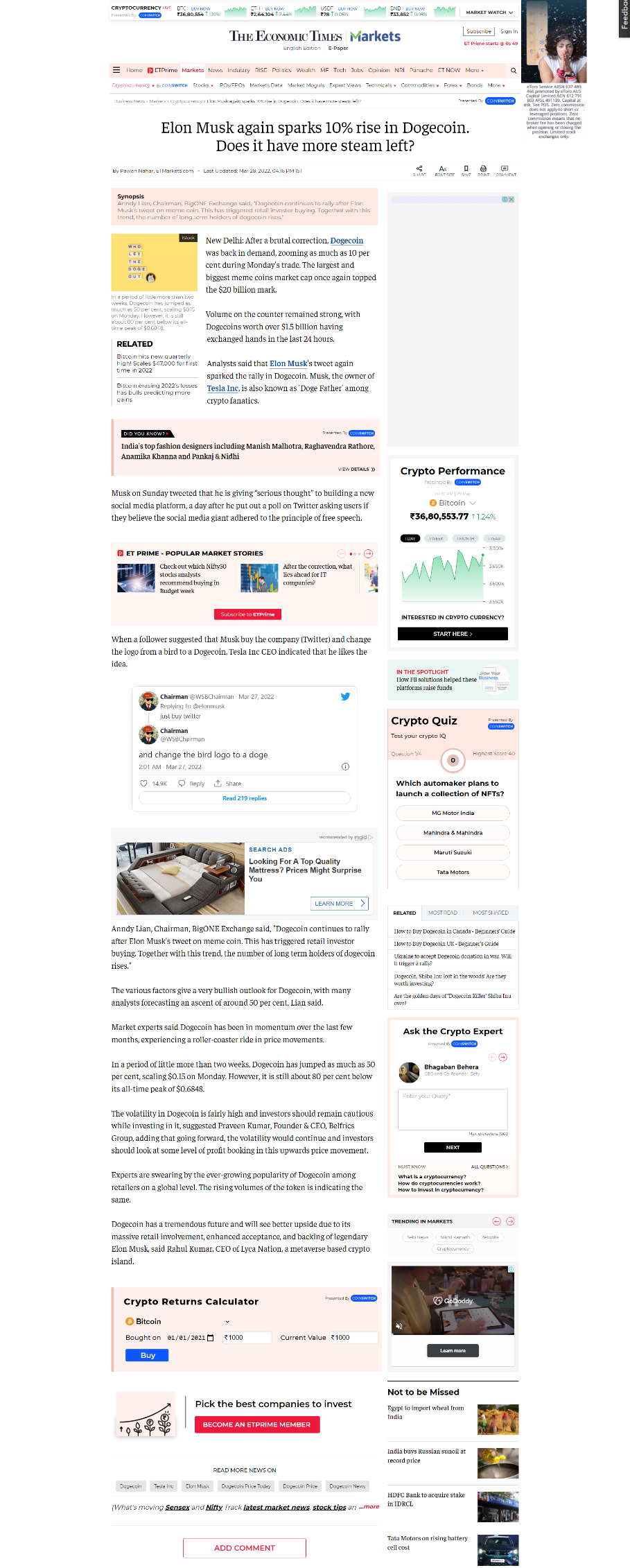According to data provided by NFT aggregation site CryptoSlam, non-fungible token (NFT) sales saw a significant rise of 8.5% during the period from February 10 to February 16 on a global scale.
The total sales volume for the week reached a staggering US$304 million, marking an increase from the previous week’s US$280 million in NFT sales.
The last two days of this seven-day period saw a notable spike in sales, with Thursday alone accounting for over 30% of the total sales volume, reaching a daily sales sum of US $92.9 million.
This single-day sales figure is the highest it has been since May 2022. The average price for NFT assets sold on Thursday was US $463.09, which is approximately 265% higher than the average price of US $175.57 on Tuesday.
According to Yohann Calpu, the chief marketing officer at CryptoSlam, this sudden surge in sales can be largely attributed to the Blur token airdrop that occurred on Tuesday.
The NFT market continues to thrive, with significant increases in sales indicating a growing interest in this innovative and exciting sector.
Blur, a feeless NFT marketplace, recently unveiled its Blur tokens and granted a 60-day window for users to collect their airdropped coins. As of 2:30 p.m. Singapore time, the cryptocurrency was valued at US $0.90, based on CoinGecko data.
Based on the DappRadar, Blur’s NFT marketplace has experienced a trading volume of US $471.7 million in the last 30 days, overtaking OpenSea, the current market leader with US 448.9 million.
While many are talking about Blur, I am watching Bitcoin NFTs closely.
Bitcoin NFTs are quickly becoming a hot new trend in the world of digital collectibles. The launch of the Ordinals protocol on the Bitcoin blockchain by software engineer Casey Rodarmor has provided a novel way to mint NFTs on the Bitcoin blockchain.
This has led to a surge in interest in Bitcoin assets, with many people excited about the possibilities of this new technology.
The Ordinals protocol allows users and builders to inscribe each “sat” (short for Satoshi) with data, including smart contracts, which can then be used to create NFTs on the blockchain.
One of the key differences between Ethereum-based NFTs and Bitcoin NFTs is that Ethereum NFTs typically point to off-chain data on the IPFS system, while all the data for Bitcoin NFTs is inscribed on-chain using the Ordinals protocol.
This provides a more secure and trustworthy way of creating and trading NFTs.
The introduction of Ordinal Punks is expected to change the game for Bitcoin NFTs. These digital collectibles are tradeable artifacts that are inscribed on the Bitcoin blockchain, and they have been incredibly popular with buyers so far.
The 10,000-piece collection has already been sold out, with some individual pieces selling for millions of dollars. However, one of the challenges with the project is that there is currently no centralized marketplace to buy and sell the crypto art once it has been minted.
This means that buyers and sellers must rely on social media channels like Discord to find each other and negotiate transactions.
Despite the popularity of Bitcoin NFTs, some Bitcoin maximalists have pushed back against the trend, arguing that it goes against the idea of Bitcoin as a financial asset. They believe that NFTs are simply a waste of network space and resources.
However, proponents of Bitcoin NFTs believe that they represent a new and exciting way to create digital collectibles that are secure, trustworthy, and unique.
Scott Tripp, President of Redecentralise Canada, commented: “Bitcoin is often considered to be one of the most decentralized cryptocurrencies due to its distributed network of nodes and miners.
The Bitcoin blockchain is maintained by a decentralized network of nodes that are spread across the globe and work together to validate transactions and add new blocks to the chain.
The decentralized nature of the Bitcoin network may appeal to creators and collectors who are looking for a more secure and censorship-resistant platform for their NFTs. Overall, while the potential for Bitcoin NFTs exists, it remains to be seen how popular they will become in the future.”
To buy a Bitcoin NFT, users must first download a Bitcoin-compatible wallet and make it compatible with Ordinals. They can then either create and inscribe their own Ordinal or find an existing owner and purchase one from them.
However, buying Bitcoin NFTs can be a risky process as there is no centralized marketplace or regulation. Buyers and sellers must navigate social media channels and online communities to find each other, and there is always the risk of fraud or scams.
Despite these challenges, the growing popularity of Bitcoin NFTs suggests that they are here to stay and will likely continue to evolve and grow in the coming years.
Intergovernmental expert and best-selling book author Anndy Lian echoed, “Bitcoin NFTs, as unique digital assets created and traded on the Bitcoin blockchain, can certainly be seen as a decentralized innovation.
While the technical limitations of the Bitcoin network mean that the creation and transfer of NFTs may not be as seamless as it is on other blockchain platforms such as Ethereum, the potential for Bitcoin NFTs to be a more decentralized and secure option for creators and collectors is certainly noteworthy.”
Some people in the NFT industry have expressed concerns about the environmental impact of Bitcoin NFTs. Bitcoin is known for its high energy consumption due to its consensus mechanism, which uses a lot of computational power.
Minting NFTs on Bitcoin could therefore contribute to the carbon footprint of the blockchain.
Despite the concerns, the rise of Bitcoin NFTs and the Ordinals protocol has created a new avenue for the NFT industry to explore.
As the industry continues to evolve, we can expect to see more experimentation with different blockchain protocols and the emergence of new use cases for NFTs beyond art and collectibles.
In conclusion, the rise of Bitcoin NFTs and the Ordinals protocol has created a new way of minting and owning unique digital collectibles on the Bitcoin blockchain. While the concept may face some backlash, it also presents an opportunity for the NFT industry to evolve and expand.
Source: https://hackernoon.com/exploring-the-thriving-nft-market-and-the-rise-of-bitcoin-nfts


Anndy Lian is an early blockchain adopter and experienced serial entrepreneur who is known for his work in the government sector. He is a best selling book author- “NFT: From Zero to Hero” and “Blockchain Revolution 2030”.
Currently, he is appointed as the Chief Digital Advisor at Mongolia Productivity Organization, championing national digitization. Prior to his current appointments, he was the Chairman of BigONE Exchange, a global top 30 ranked crypto spot exchange and was also the Advisory Board Member for Hyundai DAC, the blockchain arm of South Korea’s largest car manufacturer Hyundai Motor Group. Lian played a pivotal role as the Blockchain Advisor for Asian Productivity Organisation (APO), an intergovernmental organization committed to improving productivity in the Asia-Pacific region.
An avid supporter of incubating start-ups, Anndy has also been a private investor for the past eight years. With a growth investment mindset, Anndy strategically demonstrates this in the companies he chooses to be involved with. He believes that what he is doing through blockchain technology currently will revolutionise and redefine traditional businesses. He also believes that the blockchain industry has to be “redecentralised”.







